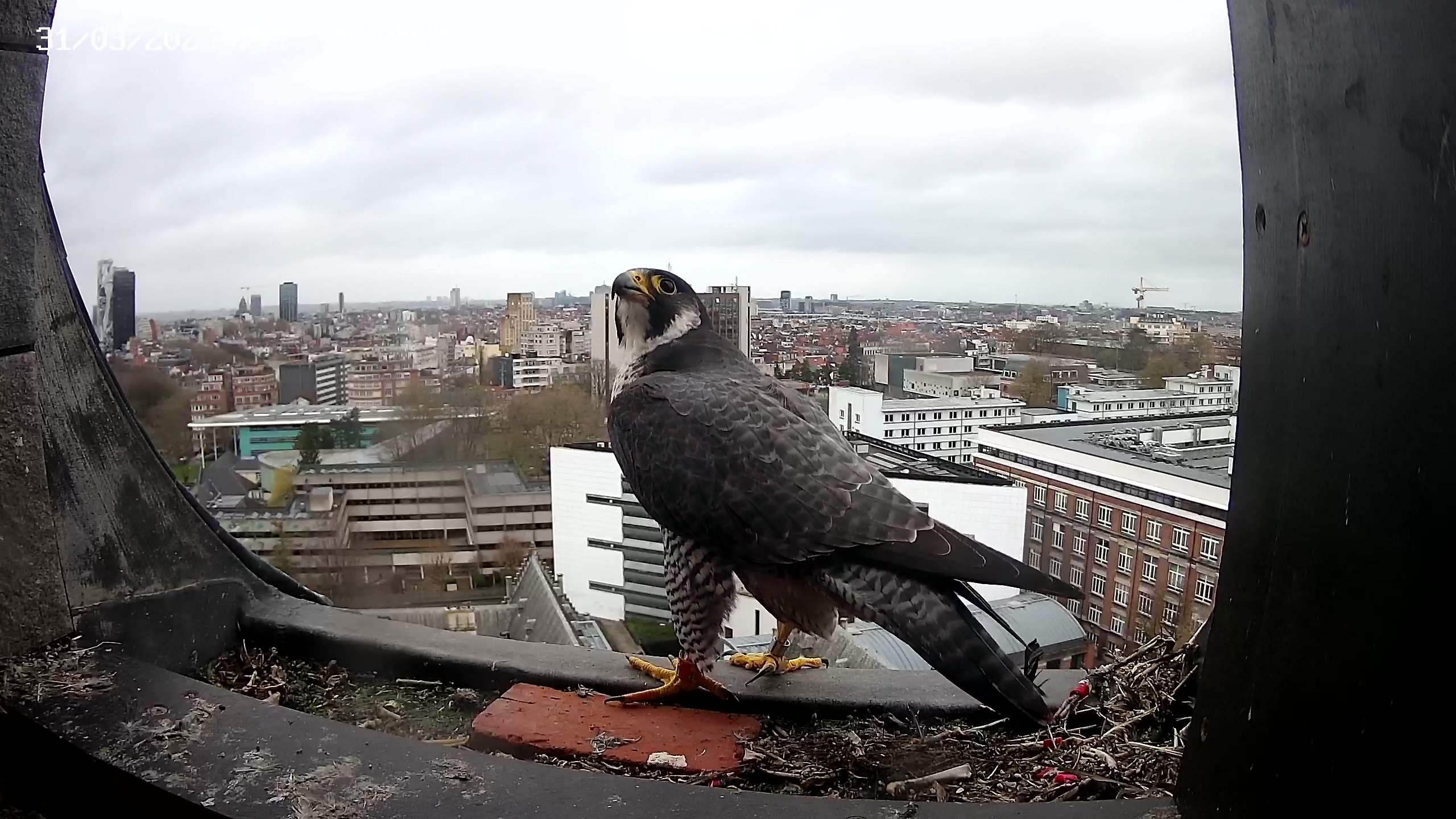ULB invites the CIVIS community to follow live the hatching and birth of their Peregrine Falcons

Observed for the first time in 2019, the pair of Peregrines that have taken up residence at the top of Building A on the Solbosch campus raise between two and four chicks each year. And this year, four eggs will give birth to falcons that will even benefit from a new, enlarged nest. This extension means that the newborns will be less cramped and the camera will be further away at the same time.
Brussels, the city of the Peregrine Falcon
The Peregrine Falcon had almost completely disappeared from Europe: the use of organochlorine pesticides caused physiological and behaviuoral disorders in the animal, and made its eggs porous, therefore unviable.
Returning to Belgium in 1994, the Peregrine Falcon established itself in the capital in the 1990s, making Brussels the city of Peregrine Falcons. Today there are around fifteen couples there, out of nearly 200 throughout Belgium.

For the past four years, the ULB has been part of the Falcon for All programme, a project developed by the Royal Belgian Institute of Natural Sciences to monitor the evolution of the falcon population and identify any threats, but above all to share observations with the general public and not just via scientific reports.
Therefore, you can also watch them live and find out all you need to know about this protected species on the dedicated website.
